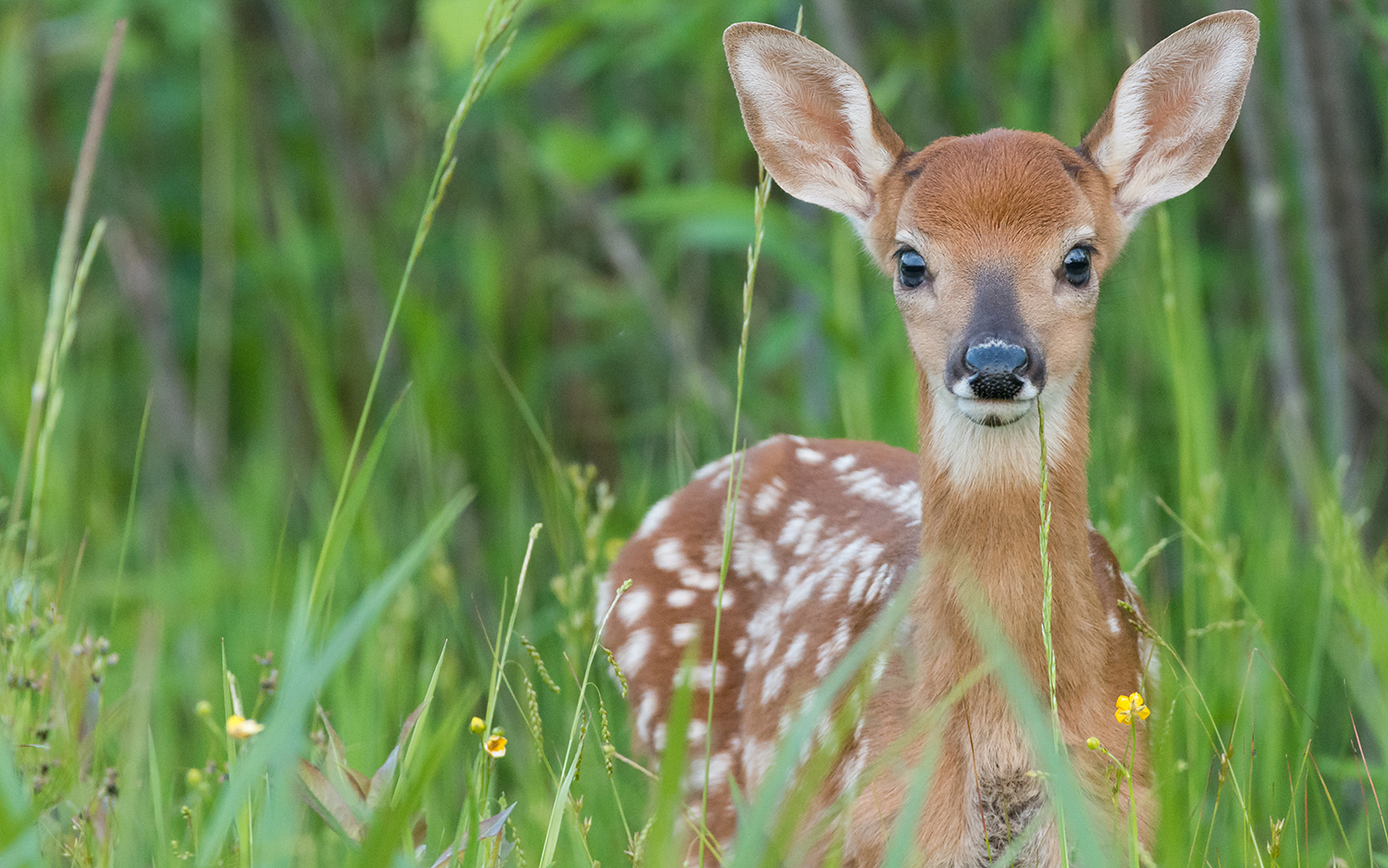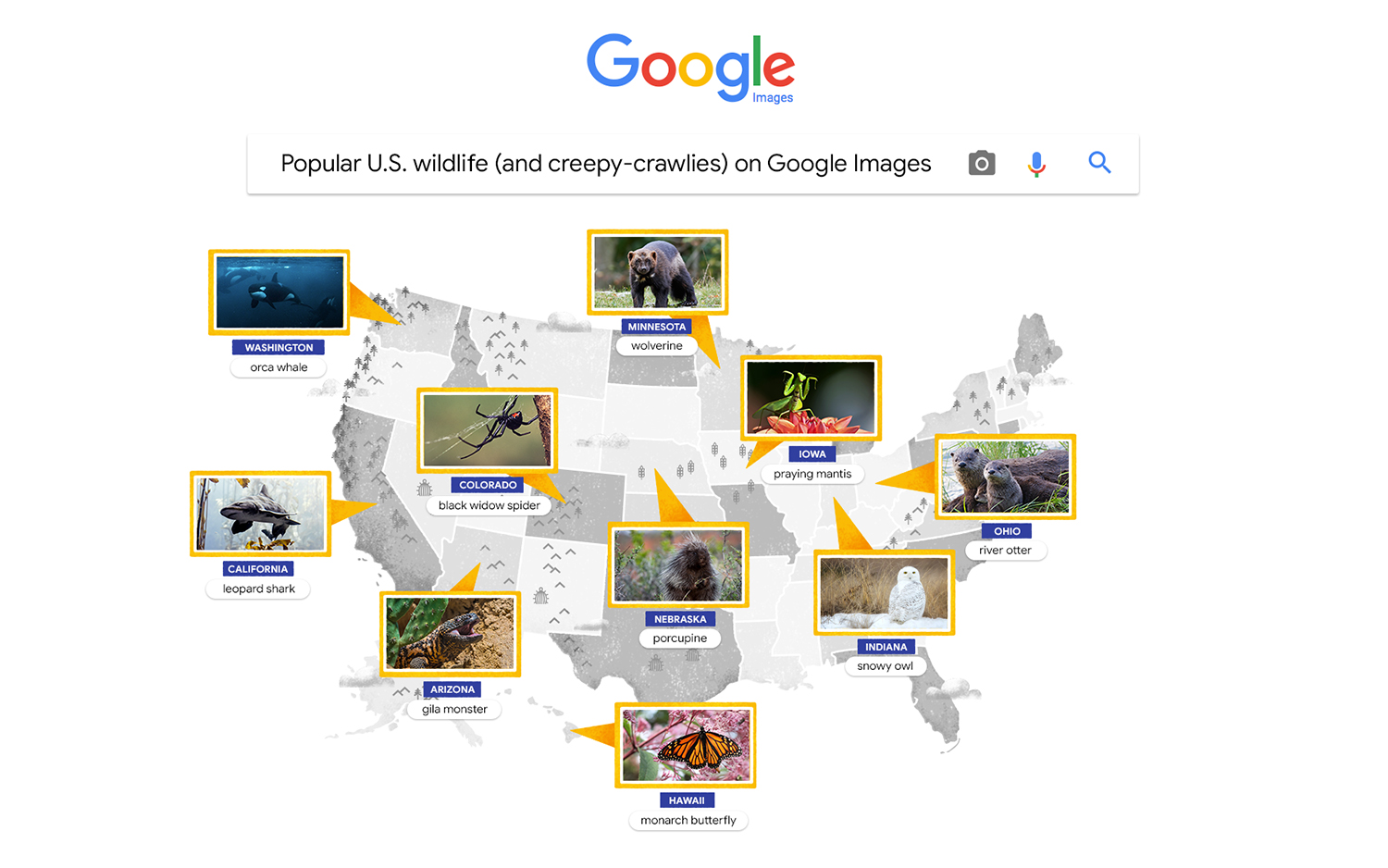What Are the Most-Googled Wildlife Photos in Your State?

Are people more captivated by deadly local snakes, carnivorous mammals or venomous spiders?
It depends on where people live, according to new data from Google showing the top image searches for bugs and wild animals, state by state in the U.S. [10 Easy Ways to Help Wildlife, Every Day]
In some states, people searched for images of animals that were native to that region: Orcas were at the top of the list in Washington, and Washington's Puget Sound is home to a group of orcas known as the Southern Resident Killer Whale population, according to the U.S. Fish and Wildlife Service (FWS). Wolves were popular in several states, turning up as the most-searched animal in Montana, North Carolina, North Dakota, South Dakota, Utah and Louisiana.
Some states leaned toward photos of reptiles: People in the District of Columbia searched for salamanders, Arizona residents opted for Gila monsters and Hawaiians Googled turtles. Snake species were the No. 1 choice in seven states, with copperheads coming in first in Tennessee, South Carolina, Missouri and Georgia — all of which are home to the muscular viper.
The fisher cat, a small carnivorous mammal in the same family as martens, weasels and wolverines, was another popular selection, topping image searches in six states.
But perhaps the most puzzling results are from Oklahoma, where the top search was for meerkats. These endearing, burrowing mammals are not found anywhere in North America, and are native only to deserts in Botswana, Namibia, southwestern Angola, and South Africa, according to the International Union for Conservation of Nature (IUCN).

As for insects and spiders, Google searches were dominated by spiders, with 23 states having some type of spider as their top image search. The most popular by far was the brown recluse, showing up as the No. 1 search in seven states. Top searches in other states focused on stink bugs (Wisconsin, New Hampshire, Michigan, Illinois and Connecticut); praying mantises (the District of Columbia and Iowa); and luna moths (Alabama).
Sign up for the Live Science daily newsletter now
Get the world’s most fascinating discoveries delivered straight to your inbox.
Google released its findings to commemorate the 50th anniversary of the National Trail System, according to a statement. The passage of the National Trail System Act in 1968 launched a federal initiative to promote, preserve and maintain trails in urban and rural settings, to provide people with opportunities for outdoor recreation and to encourage people to interact with the natural world, according to the National Park Service (NPS).
Original article on Live Science.

Mindy Weisberger is an editor at Scholastic and a former Live Science channel editor and senior writer. She has reported on general science, covering climate change, paleontology, biology and space. Mindy studied film at Columbia University; prior to Live Science she produced, wrote and directed media for the American Museum of Natural History in New York City. Her videos about dinosaurs, astrophysics, biodiversity and evolution appear in museums and science centers worldwide, earning awards such as the CINE Golden Eagle and the Communicator Award of Excellence. Her writing has also appeared in Scientific American, The Washington Post and How It Works Magazine. Her book "Rise of the Zombie Bugs: The Surprising Science of Parasitic Mind Control" will be published in spring 2025 by Johns Hopkins University Press.









